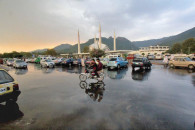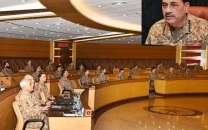Sanctuaries of violence!
Pakistan's seminary landscape is vast and largely unregulated

It is never easy to speak about religion in Pakistan. Yet silence, especially when it protects abuse, is not piety. The recent tragic death of a young boy named Farhan — allegedly at the hands of his madrassa teachers in Swat town of Khyber-Pakhtunkhwa — has once again exposed the dark underside of religious seminaries in Pakistan.
This is not an isolated incident. Stories of violence, abuse and trauma regularly emerge from madrassas, but the country moves on after registering an FIR, capturing the culprits and issuing a few condemnations. What remains untouched is the institution itself — the structure that permits such acts to be repeated without fear of accountability.
Let me share a personal experience from the mid-2000s. I used to attend a Quran recitation class at a madrassa in DHA Lahore, Block B. It was affiliated with a seminary in Gujrat, well-known for its accurate teaching of tajweed (Quranic pronunciation). The system worked like a franchise: female teachers, trained in the Gujrat seminary, were sent to various cities, their boarding and lodging the responsibility of the local elites.
One morning, deviating from my usual evening visits, I walked in to find the classroom full of children, mostly girls under the age of 14. What I witnessed shook me. A female teacher (ustani) suddenly grabbed two teenage girls by the hair, dragged them to a wall, and began banging their heads against each other's and then against the wall. Their crime? They had threaded their eyebrows. The ustani, invoking a hadith that condemns this act, believed it was her duty to enforce divine punishment.
When I protested this abuse, I was asked to leave the madrassa. The teacher remained, for she was seen as merely executing Allah's will.
The real tragedy lies not in isolated events of brutality but in the systematic way violence is sanctified in some seminaries. Teachers — often themselves products of rigid, outdated curricula — feel entitled to discipline students through beatings, humiliation, or worse.
Pakistan's seminary landscape is vast and largely unregulated. While the government has made some progress through the Directorate General of Religious Education (DGRE), registering over 17,700 madrassas with more than 2.2 million students enrolled as of 2024, thousands more remain unregistered and beyond the reach of formal oversight. Despite reforms the reality is that many madrassas continue to function as parallel educational systems, with little accountability.
Rarely do Islamic political parties or religious scholars raise their voices against such incidents. Ironically, they come together only when one of their own is arrested or criticised. Consider how our mainstream political parties expressed solidarity with a far right religio-political party when it clashed with law enforcement authorities, causing chaos on the streets and endangering Pakistan's diplomatic relations — especially during the FATF (Financial Action Task Force) grey-listing period.
Tragically, not just political or religious groups, but even segments of Pakistan's judiciary contributed to this glorification. In 2016, during Qadri's funeral, many religious organisations hailed him as a hero. More disturbingly, sections of the judiciary reportedly treated Qadri with unusual leniency and respect during court proceedings, projecting him not as a convicted murderer, but as a man driven by righteous indignation.
The religious personalities in Pakistan are quick to condemn others but rarely introspects.
Our leaders recite the Quran in public yet pay little heed to its central commandment of rahmah (mercy). They preach discipline but ignore the Prophet Muhammad's (peace be upon him) own example — he never once struck a child or raised his hand against a student. Even more striking is the Prophet's (peace be upon him) conduct toward his political and ideological opponents. Despite being affronted, attacked and boycotted, he consistently responded with forbearance. At the conquest of Makkah, when he had absolute power over those who had once persecuted him and his followers, he declared, "You are free." He never used religion as a tool to exact revenge or silence dissent.
So, where do we go from here?
First, there needs to be an independent madrassa regulatory authority, not one under the religious affairs ministry but one constituted with legal experts, child rights activists and progressive religious scholars.
Second, Pakistan must modernise the Dars-e-Nizami curriculum. This does not mean diluting religious education but enhancing it with ethics, child psychology, civic education and Quranic studies that focus on values, not just memorisation.
Third, it is time to initiate state accountability. The state's decades-long policy of using religion for political gain has created monsters. From blasphemy lynchings to honour killings, the roots lie in a culture where the divine is invoked to justify the violence.
Pakistan's greatest threat today is not from the outside world. It is not India, not America, not Israel. It is from within — from its own political class, its religious elite, and a system that glorifies anger over empathy, fear over knowledge and silence over justice.
Faith is not fragile — it can survive questioning. But a society that allows its children to be beaten in God's name is already on the path to moral death.
Let this not be just another news cycle. Let it be the beginning of a national reckoning.












COMMENTS
Comments are moderated and generally will be posted if they are on-topic and not abusive.
For more information, please see our Comments FAQ